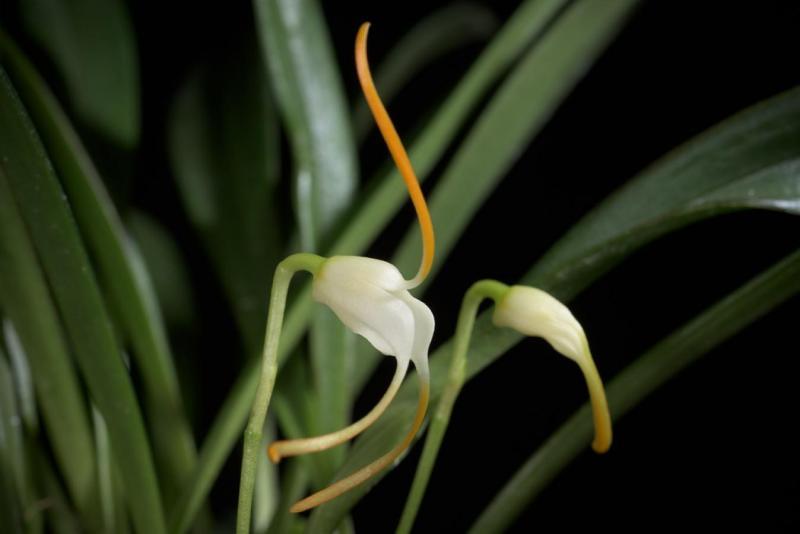Masdevallia minuta
Also known as: The Tiny Masdevallia or Masdevallia surinamensis in the subfamily: Epidendroideae
Native to: Departamento del Huila - Colombia French Guiana Guyana Sao Paulo - Brazil
General Information
The Tiny Masdevallia is a miniature cool to warm growing epiphytic or terrestrial orchid belonging to the sub family Epidendroideae native to Colombia, French Guiana, Guyana, and Brazil.
Plant Description
Grows to 0.5-6.5cm. Each new growth has numerous leathery erect leaves that grow to 0.3-5.5cm long
Flowers
Numerous blossoms appear during Summer and Autumn
Blooming Season
- Autumn
- Summer
Substrate(s)
- Coarse
- Bark
- Treefern
- Spaghnum Moss
- Perlite
Care Notes
These orchids like to be watered regulary, especially during warm weather, and prefer a well draining mix or also do well mounted, provided they can be watered daily or even many times a day.
These are quite a forgiving orchid, there are no special requirements to get this orchid to flower, just good care and consistent conditions. Larger plants may be more fussy and can react poorly to change; a poorly timed repotting, a pest infection or an unusually hot day can set them back for a couple of years. However, even plants that have been treated poorly can thrive, and if they are set back they often recover much stronger then they would otherwise be.
Climate
Grows at low to high elevations. Rainfall ranges from 20mm to 150mm per day, heaviest in July and lightest in February. Humidity ranges from 63% to 78%, highest in August and lowest in March. Temperature ranges from 14C to 31C, highest in June (21C to 31C) and lowest in January (14C to 23C).
Watering
These orchids prefer a constant supply of moisture, with a slight drying out between waterings. Saucers can be placed under pots to retain moisture during hot weather, however the saucers should be removed or let to dry every 1-2 weeks to prevent rot. Keep an eye on the plant especially in hot weather and look for cues of under/overwatering and adjust accordingly.
Keep moisture levels up during hot weather as the plant is prone to dehydrationFertiliser
These orchids do not need to be regularly fertilised and roots may be sensitive to salt build-up, dying back and therefore impairing the plants growth or even killing it.
If fertilising, use half to quarter of the recommended amount of fertiliser. If they receive fertiliser as part of a collection, be sure to flush out the pots regularly with fresh water and monitor the roots by checking how much resistance is given by the plant when nudged in its pot or mount. If the plant becomes wobbly or loose, repot in fresh mix or rinse the media/mount thoroughly and do not fertilise for at least 3 months.
Use balanced fertiliser year round. Apply fertiliser regularly at half strength year round. This plant is sensitive so apply fertiliser sparingly at one quarter recommended strength or less. Use a high Nitrogen fertiliser year round. Use a high Phosphorous fertiliser during Summer. Reduce fertiliser when plant is dormant during Spring.Potting
These plants can be sensitive to repotting though should not require repotting regularly. Repotting should be done when the mix has broken down to the point that it doesn't absorb water or holds onto water for far too long, usually the plant shows a decline in growth as well.
The mix should be free draining, with a blend of 30% inorganic ingredients such as coarse sand, gravel or perlite, mixed in with about 70% organic ingredients such as peat, leaf litter or decomposed bark. Avoid commercial potting mixes as they can vary wildly and may contain "wetting agents" that can hold onto water for loo long, causing rotting and stunted growth.
Use water retentive media such as moss to prevent roots from drying out quickly This plant does very well in baskets or suspended pots This plant does well mounted to Cork slabs. Repotting is best done annually.










